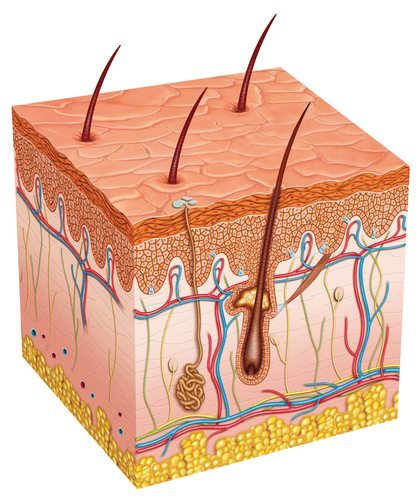Did you know that your skin is the largest organ in your body? Although most people worry about how their skin looks, remember to focus on your skin’s health as well. To ensure that your skin can complete its many important jobs, keep it nourished, hydrated, and protected. This will improve your overall health as well as your appearance. In addition, learn about the structure of skin so that you better understand how it works and how you can take care of it.
Structure of Skin
Your skin acts as a physical barrier against the environment, protecting your entire body from external harm. It allows water and electrolytes to pass through it while regulating how much of each substance may exit and enter. In addition, your skin protects your body from a variety of dangers, including toxins, ultraviolet (UV) radiation, and microorganisms.
Most people are familiar with the outer layer of skin, the epidermis. Underneath the epidermis, you will find the dermis, a supportive layer of tissue that connects the epidermis to the hypodermis. The hypodermic, the deepest layer of skin, consists of fatty tissue. To learn more about the structure of skin, simply scroll down.
The Epidermis
The most external layer of your skin, the layer you see every day, is the epidermis. Its thickness depends on its location on your body. The epidermis on your eyelids, for example, may be just 0.5 mm, while the epidermis on the bottom of your feet can reach up to 1.5 mm! The layer is largely composed of flat, keratin-filled cells. Skin cells form near the base of the dermis and then rise up to the epidermis as they age. Thus, your skin remains in a constant state of renewal. When the body sloughs off older skin cells, the newer cells reaching the surface replace them.
Melanocytes and merkel cells are also found in your epidermis. Melanocytes make melanin, which provides your skin with color and protects against UV rays. Merkel cells allow you to feel light touches, and high concentrations of these cells are found in your fingertips and lips.
The Dermis
A lot of action occurs in the center layer of skin, also known as the dermis. The dermis plays an important role on hot days, because it bears the responsibility of creating sweat. Perspiration exits through your pores and helps regulate your body’s temperature and remove toxins. Oil production, which influences your skin’s level of hydration, also occurs in the dermis.
The roots of your hair and many nerves are located in your dermis, as are collagen and elastin, which provide support for the epidermis and increase the skin’s elasticity. As we age, our bodies produce less and less collagen and elastin, which can lead to wrinkles and fine lines.
The Hypodermis
The deepest layer of your skin, the hypodermis, is sometimes referred to as subcutaneous tissue. Along with large amounts of fatty tissue, which cushions internal organs and protects the body from heat and cold, the hypodermis also contains nerve endings, sweat glands, and follicles. The connective tissues located within the hypodermis attach your skin to your muscles and bones.
The depth of your hypodermis depends on your age and amount of body fat. As you grow older, the amount of fat in your hypodermis decreases. This frequently results in the appearance of sagging skin.
Is your skin troubling you? Whether you’re concerned about acne, wrinkles, or lesions, DermaHealth can help. Our consultants can help you decide which services and products will work best for your concerns during a free consultation. To learn more, please give us a call at 417-447-7777 or click here to schedule a free consultation. We look forward to hearing from you!







